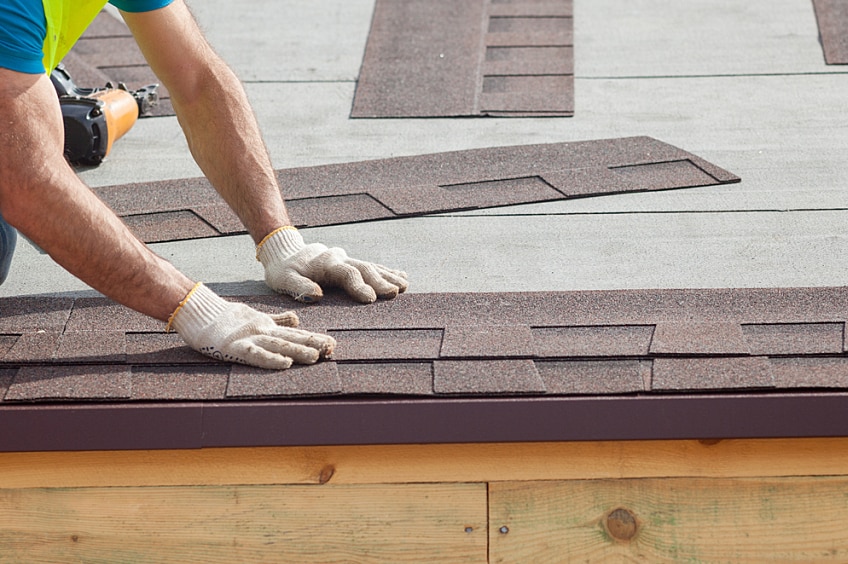If your home is about to undergo a new roofing project, you may hear your contractor refer to the size of your roof in squares.
What is a roofing square? It's simply a unit of measurement that contractors use to calculate the amount of materials your roof replacement will require. In turn, they will use this information to develop your roof estimate.
What Is a Roofing Square?
A roofing square is an area of roof that measures 10 by 10 feet to make up a total of 100 square ft. This critical unit of measurement helps your contractor determine how much material they'll need to order for your roofing project, from underlayment to bundles of roof shingles.
Roofers determine the number of roofing squares required for an installation by measuring the length and the width of each plane that exists on your roof and multiplying the two numbers to get the square footage of each particular plane. A simple roof such as a gable style will have two planes—one at the front of the house and one toward the back. Other roof styles may have more, depending on their architectural style. Once a contractor has the square footage of each of the planes, they add them together to get the total number of squares.
So, if your roof is 25 squares, what does that mean? The number of squares is derived by taking the total measured square footage and dividing by 100. In this case, the total square footage is 2,500.
What Is a Bundle of Shingles?
A bundle refers to how the asphalt shingle manufacturer packages the product. The package or bundle must be able to be lifted and moved around the roof fairly easily, which is why the manufacturer limits each package to a manageable weight. The contractor will determine the number of bundles needed for a project based on the measurements taken and the number of squares on your roof.
While roofing squares make it easier to determine how many bundles of shingles your home's roof requires, other factors play a role in the estimating process. If your roof features architectural details, it will have more rakes, valleys, and eaves, resulting in more starting and stopping points. Contractors will also consider the number of overhangs and dormers—these features add to the style of the home, but they can also lead to shingle waste during the installation. Your contractor will add in a waste factor and potentially adjust their charges depending on the complexity and pitch of your roof.
How Many Shingles Are in a Bundle?
The answer to this question will vary based on the type of roofing material you have chosen. For instance, when you select asphalt shingles such as GAF Timberline® HDZ™, you can expect to need about three bundles to cover one roofing square. Your GAF-certified contractor* will use roofing squares to figure out the number of bundles of shingles needed to develop your roof estimate and determine the cost of your roofing project.
How Can You Visualize Your New Roof?
Often, the hardest part of a roofing project isn't navigating the logistics of squares and bundles but deciding which shingle is right for your home. The large selection of styles and colors can seem overwhelming. To make the decision easier, GAF has developed a no-cost virtual remodeling tool that lets you see how different shingle colors will look on your home. You can even change the color of the siding and doors. Choose a preloaded model home or upload a photo of your own home to try on the new style before you commit.
Choosing a GAF-Certified Contractor
Equipped with an understanding of the basics of roofing squares, bundles of shingles, and how contractors use this information to develop an estimate, it's time to choose a contractor for your roofing project. GAF has one of the largest networks of trained and experienced roofers ready to install your new roof.
*Contractors enrolled in GAF certification programs are not employees or agents of GAF, and GAF does not control or otherwise supervise these independent businesses. Contractors may have agreed that they will use GAF roofing products, and may receive benefits, such as loyalty rewards points and discounts on marketing tools from GAF for participating in the program.

